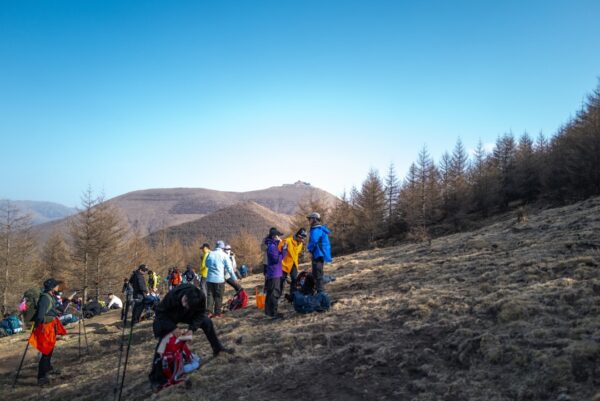Why Cat Hiking Gear Matters for Your Next Outdoor Adventure
Cat hiking gear is essential if you want a safe and enjoyable adventure outdoors with your feline friend. As this trend grows, more pet owners are discovering that cats, with the right equipment, can explore forests, mountains, and trails just like dogs. Whether you’re winding through the Lost Coast Trail in California or pacing Red Rock Canyon near Las Vegas, bringing the proper gear can make all the difference in safety, comfort, and peace of mind. This guide will help you plan, pack, and prepare — drawing from seasoned cat hikers’ stories and trail-tested advice.
Backpacks and Harnesses: Essential Cat Hiking Gear
When it comes to cat hiking gear, two must-haves are a secure walking harness and a breathable backpack carrier. The backpack gives your cat a safe place to rest when trails become tough, while allowing them to enjoy the view. Look for options like the Petkit Breezy X or Lollimeow Capsule Backpack, which feature proper ventilation, comfort padding, and secure closures. These are particularly useful on longer trails like Washington’s Mount Si, where the terrain becomes rocky and unpredictable.
A reliable harness is equally important. Cats slip out of poorly fitted harnesses easily, so choose designs like the Kitty Holster or RC Pets Adventure Kitty Harness, both of which offer snug fits and high adjustability. Begin training weeks in advance by introducing the harness indoors, then progressing to quiet outdoor spaces—think Marymoor Park in Seattle or Griffith Park’s shaded trails in L.A.
Leashes and Tethers: Granting Safe Exploration
To allow your cat to safely explore trail surroundings, pair the harness with a quality leash. Bungee-style leashes, such as those by PupTeck or PetSafe, reduce tugging and give your pet mild freedom. On family-friendly trails like the Trail of Ten Falls in Oregon, consider a retractable leash for flat, open paths.
During breaks or at camp, tethering systems like Kurgo’s Tree-Line or the Ruffwear Hitching Post add peace of mind. Always double-check campground pet policies — even at well-known locations like the Grand Canyon’s South Rim, leash rules apply. These details ensure safety for your cat, nearby wildlife, and fellow hikers.
Portable Cat Tents and Sleep Systems for Base Camp
For overnight hikes, your cat hiking gear list should include a portable tent made just for felines. Products such as the Cat Camp Tent and Outback Jack Kitty Compound are lightweight, simple to set up, and comfortable for cats adjusting to remote campsites. When exploring North Georgia’s Appalachian Spur, a compact tent provides your cat with a personal retreat after long trail stints.
Add a small fleece blanket or travel mat for warmth, especially on cooler nights. Heated pads powered by portable power banks are popular among hikers traversing chillier locations like Glacier National Park’s Iceberg Lake Trail. Also, don’t forget food and water: collapsible bowls, sealed kibble containers, and hydration stations like Kurgo’s Tailgate Reservoir are important additions.
Preparing for Emergencies: Health and Safety on the Trail
No cat hiking gear list is complete without items for health and first aid. A dedicated pet medical kit should include antiseptic wipes, tweezers, tick tools, styptic powder, gauze, and a digital thermometer. Adventure Medical Kits offers a convenient Me & My Pet version, or you can assemble your own. Don’t forget to bring a spare harness and clearly labeled ID tags.
Ensure your cat is up-to-date on vaccinations and treatments for fleas and ticks before heading to wild areas like Chautauqua Park in Boulder or Temescal Canyon in Southern California. Microchipping and registration can protect your pet if they ever break away. In hot destinations like Arizona’s Piestewa Peak, keep an eye out for signs of overheating, and use ice packs wrapped in towels to cool them down quickly if needed.
Planning the Perfect Trail: Cat-Friendly Locations
Choose trails that suit your cat’s experience level. Begin with low-elevation routes featuring shade, easy footing, and low traffic. Santa Cruz’s Nisene Marks Forest offers beginner-friendly loops through towering redwoods, while Austin’s Barton Creek Greenbelt brings water adventures and wide trails perfect for cats on tethers.
In the Northeast, the John Hay National Wildlife Refuge presents quiet paths and gentle terrain. Out west, Oregon’s Suttle Lake Loop provides flat circular routes and ideal picnic spots — some cats even enjoy a kayak break in enclosed carriers. Always check sites like AllTrails and Gaia GPS for info on pets and trail difficulty. If you’re unsure, staff at pet-friendly outfitters like REI can suggest hidden gems, such as Arizona’s less crowded Telegraph Pass Trail.
Bonus Cat Hiking Gear: Wearables, Bug Repellent, and Sun Protection
High-performance hikes call for auxiliary gear to keep your cat safe. Use zinc-free, pet-safe sunscreen to protect exposed areas like ears and noses, especially under strong sun in places like Bryce Canyon. Bug protection is crucial — Vet’s Best and Wondercide offer safe repellent wipes that deter ticks, mosquitoes, and other pests.
Paw protection is often overlooked. Use durable paw wax such as Musher’s Secret or lightweight cat booties to prevent pad injuries. UV-resistant shirts and jackets help shield your cat’s coat from both sun and scratchy underbrush. GPS trackers like the Tractive Cat Tracker improve safety, especially on wooded trails such as Arkansas’s Ozark Highlands Trail.
For cats anxious around change, consider calming gear. Pheromone-infused collars or lavender-scented bandanas (like Thundershirt’s line) create a soothing environment. Experienced cat hiker Sylvia from Boulder swears by her calming collar combo and a small portable white-noise machine during evenings in Colorado’s Indian Peaks Wilderness.
Training Tips: Getting Your Cat Trail-Ready
Training your cat to hike begins long before the trailhead. Introduce the outdoors gradually, using your backyard or local parks for initial sessions. Phoenix’s Desert Botanical Garden hosts pet-friendly nights, perfect for early socialization and sensory exposure.
According to feline trainer Claudia Stec in Portland, food rewards accelerate progress. Reward your cat for walking short distances, riding calmly in the backpack, or responding to your voice. Join local meetups such as the Facebook group “Cat Hikers of the Bay Area” to share experiences, ask questions, and learn from the community.
Take small steps and maintain patience. Some cats take to hiking immediately; others need more time. Always carry the backpack, so your cat has a retreat option. Remember — hiking with a cat is about connection, not speed.
Final Thoughts: Elevate Outdoor Adventures with the Right Cat Hiking Gear
Hiking with your cat creates unforgettable shared experiences and a deeper human-animal bond. But success starts with smart planning and dependable cat hiking gear. From well-ventilated backpacks to portable tents and calm-inducing collars to GPS trackers, every item plays a role in keeping your adventure safe and stress-free—for both of you.
Whether you’re soaking in Oregon’s Umpqua Hot Springs or navigating light ridgelines in North Carolina’s Pisgah National Forest, the journey is better with whiskers by your side. So gear up, explore responsibly, and create memories in the wild with your curious co-pilot.







